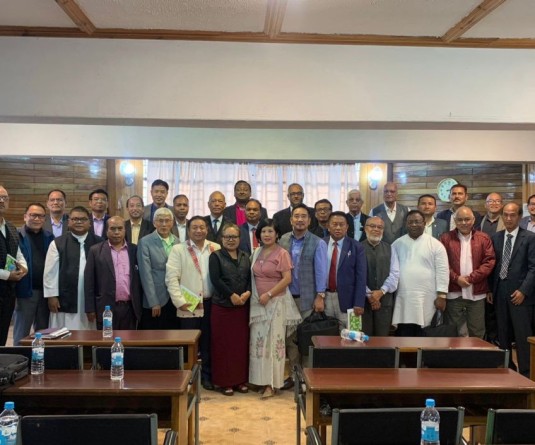
Hukavi T Yeputhomi
Chairman, United Naga Tribes Association on Border Areas
The 16 Point Agreement of 1960 made between the Government of India and the undivided Naga National Council (NNC) was based on the facts of subsequent historical developments started with the Memorandum submitted by the Naga Club to Simon Commission in 1929 just prior to the enactment of Government of India Act, 1935 that had a far reaching significance on the declaration of Independence of India on 15th August 1947.
2. Point No. 6 of 9 Point Agreement was reiterated on Point No. 12 and 13 of the 16 Point Agreement relating to the re-transfer of Naga Reserved Forests and amalgamation of Naga inhabited territories under one administrative unit.
3. Had the Emissaries of the Dominion of British India not offered and committed for re-transfer of the Naga Reserved Forests and amalgamate the Naga territories which were illegally transferred out of Naga Hills District by the Britisher for their own convenience, the then undivided NNC would never have entered into any agreement or signed the 9 Point Agreement to be within the Union of India. But since the Government of India had signally and unilaterally failed to fulfill their own commitment made with the Naga people, the struggle for self determination ensued.
4. These facts of history bring us back to the ongoing border dispute with Assam. In reply to the now infamous Civil Suit No. 2 of 1988, filed by the Government of Assam in the Honorable Supreme Court of India, the Government of Nagaland during one of the hearing had made it clear to the Mediator Commission appointed by the Honorable Court that because of the failure of the Government of India to demarcate the Nagaland State boundary, it is still without any demarcated boundary. Further, it was also mentioned in the Court that the boundary dispute has to be subjected to Article 363 of the Constitution of India. Quote: ‘No Court shall have jurisdiction out of any Provision of a Treaty, Agreement, Covenant, Engagement, Sanad or others similar instrument which was entered into before the commencement of this Constitution by any rulers of Indian State and to which the Governor of the Dominion of India and any of its predecessor Government was a party’.
5. The famous Hydari (Akbar Ali) Agreement or 9 Point Agreement comes under this Article 363 of the Constitution of India and accordingly the honorable Court had directed the Government of India to take steps in this direction in the year 2014.
6. However, surprises after surprises, the then Government of Nagaland agreed to take steps on behalf of the Government of India. This was nothing short of the singing bird Cuckoo who does not know how to hatch its own eggs.
7. This brings us back again to the Naga Political issue which is directly linked to the Naga territorial issue, the settlement of which cannot be possible without the other.
Therefore, the demand for integration of Naga inhabited areas is nothing but it is the rightful claim of the Naga people for bringing back the transferred Naga Reserved Forests areas from Assam and amalgamates the contiguous Naga areas into Nagaland State which cannot be denied by the Government of India since we are in India today.




